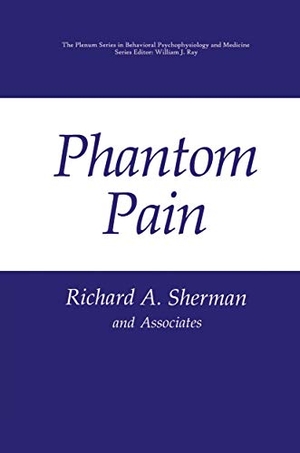
Richard A. Sherman
Phantom Pain
- Springer US
- 2010
- Taschenbuch
- 284 Seiten
- ISBN 9781441932563
Phantom pain is an intriguing mystery that has captured the imagination of health care providers and the public alike. How is it possible to feel pain in a limb or some other body part that has been surgically removed? Phantom pain develops among people who have lost a limb or a breast or have had internal organs removed. It also occurs in people with totally transected spinal cords. Unfortunately, phantom pain is a medical night mare. Many of the people reporting phantom pain make dispropor tionately heavy use of the medical system because their severe pains are usually not treated successfully. The effect on quality of
Mehr
Weniger
zzgl. Versand
in Kürze